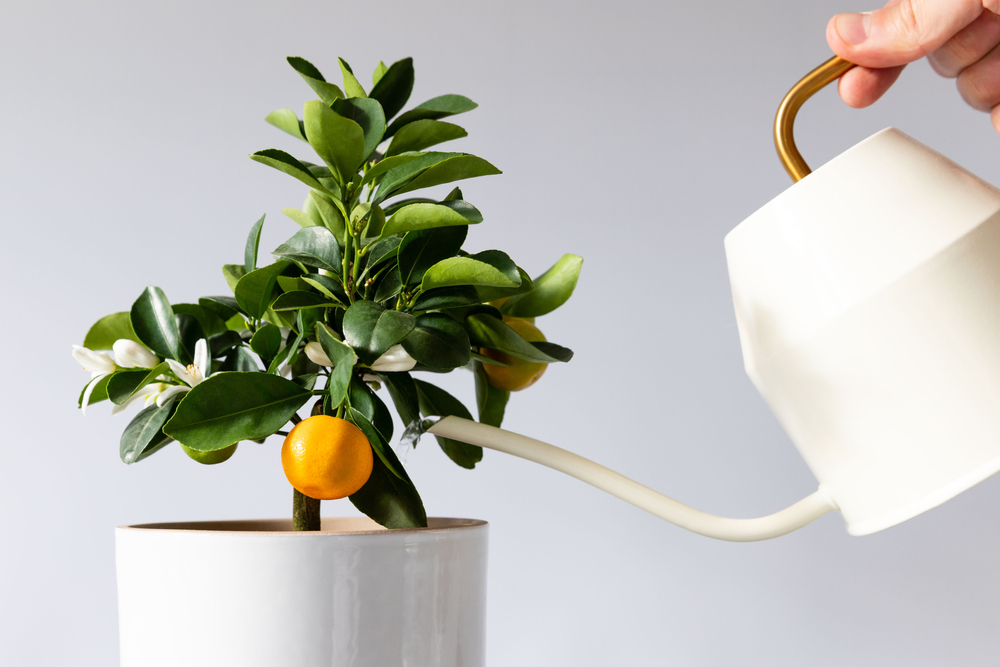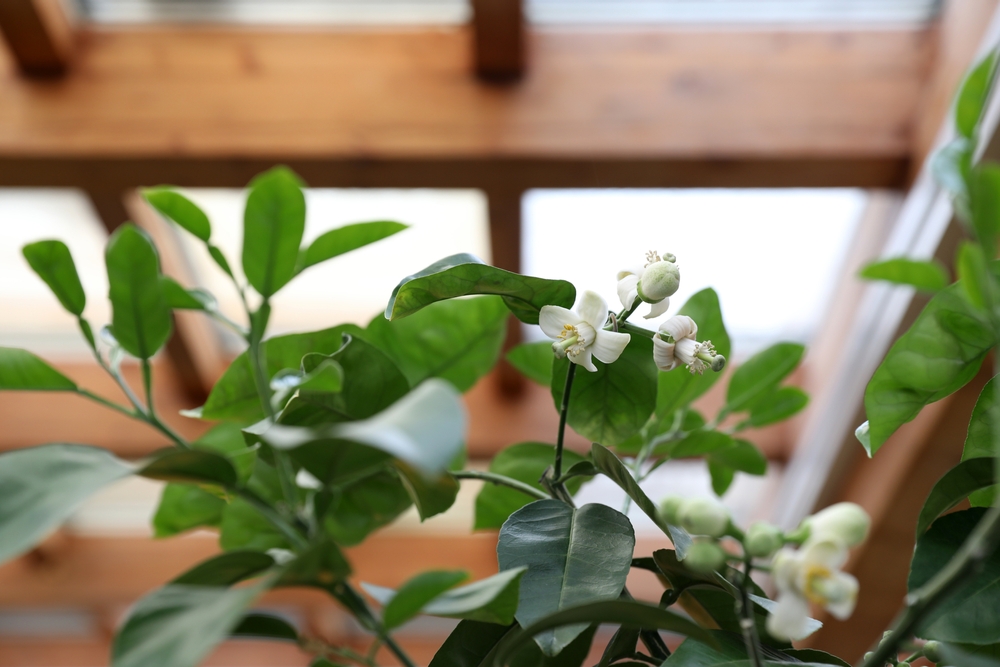In order to allow them to produce beautiful fruits again the following season, citrus fruits must be properly overwintered. Whether outdoors or indoors, here is how to properly overwinter lemon, mandarin, orange and other citrus trees.
Although citrus fruits are able to withstand temperatures below 0 degrees, some even resistant to -7°C, lemon, orange and mandarin trees must be properly protected to get through the winter as well as possible. Just like kumquats and calamondins, which allow you to enjoy citrus fruits all winter long! SO, how to properly winter your lemon tree and other citrus fruits? Here are several tips:
How to overwinter citrus fruits?
1 – Bring in the citrus fruits at the right time
Depending on the region, citrus fruits are most often brought indoors around October 15, or at the end of November, depending on climatic conditions. The goal? Let your shrubs benefit from the last rays of sunshine for as long as possible.
Before bringing in your citrus fruits, inspect them in order to treat them in the event of the presence of parasites or possible diseases.
2 – Keep the citrus fruits warm
Before temperatures drop, we must therefore bring the citrus fruits into a cold greenhouse, or into a heated room ; but be careful: these should not be placed near a heat source like a radiator. You should also not expose them behind a window, in direct contact with the sun’s rays. However, be sure to choose a room with sufficient light and, above all, protected from frost.
3 – Insulate citrus fruits from the cold
Insulate citrus fruits from the cold is essential for a successful wintering. Place a plate under the pot to protect the roots from the cold and humidity carried by the soil. It can be a simple wooden board.
If the temperature drops below 4°C, cover the whole citrus fruit with a veilor a cover surrounding the pot and another protecting the fruit.
Think about open the covers from time to time to allow good ventilation and, above all, the passage of light, as soon as temperatures rise above 4-5 degrees during the day.
4 – How to water citrus fruits in winter?
Watering citrus fruits must be adapted to the winter season. From the end of October, start reducing water intake, without eliminating it. It is appropriate tomoisten the clods about once a weekhaving a light hand. It is only at the end of February, when the plant’s vegetative cycle resumes, that you can start to increase the quantities of water.
Also prefer to use non-calcareous water to water your citrus fruits, if possible from a rainwater collector. Otherwise, let the tap water sit for a few hours before watering your plants, which will also allow the chlorine to evaporate.

5 – Add ‘special citrus’ fertilizer
To help your citrus trees get through the winter, you can regularly provide them with ‘special citrus’ soluble fertilizer. The latter, composed most of the time of nitrogen, phosphate and potassium, fertilize the soil of your plants by providing them with everything they need. Whether your citrus fruits are in the ground or in a pot, an addition of fertilizer diluted in the watering water is recommended approximately every 15 days.
Make a natural, homemade fertilizer for citrus fruits:
It is possible to design your own homemade fertilizer for citrus fruitsby mixing a little compost into their substrate, to which you can add coffee grounds to enrich it with magnesium. Other homemade fertilizers for citrus fruits: cut small pieces of banana peel and also mix them with the clod of earth surrounding the roots of your shrubs. Wood ashes, used in small quantitiesalso serve as an interesting fertilizer for citrus fruits, notably delivering potassium.
Read also – Recycle ashes from wood pellets and logs: 7 clever ways to use them in the garden and at home
6 – Manage ventilation properly
During the wintering of citrus fruits, ventilation is essential to avoid the possible development of diseases or proliferation of parasites. If wintering in a greenhouse, remember to open it regularly when temperatures exceed 8°C. The same if your citrus fruits are indoors, in a room in your home. Make sure there is good ventilation by opening your windows at least 15 minutes a day.
This ventilation must be intensified as the sunny days return, so as to accustom your citrus trees to a return outdoors. Be careful, however, during the winter months, of icy drafts which can cause damage.
7 – Monitor parasites to prevent their development
When the atmosphere is dry, overwintered citrus fruits are ideal prey for mites and other parasites which can wreak havoc. It is possible to eliminate them with black soap mixed with a little water, sprayed using a mister below and above the leaves. Also think about remove dust regularly which is deposited on the foliage, using a damp sponge. If the air is too dry, place a humidifier on your radiator.
Mealybugs can be eliminated with cotton swabs soaked in alcohol at 70°C.

8 – How to overwinter a lemon tree and other citrus trees in the ground?
Finally, for winter citrus fruits in open groundwhich cannot therefore be sheltered in a greenhouse, as well as those whose tray is too heavy and cannot be moved, mulching is essential. Protect the surrounding soil with thick mulchwhich you will remember to lift to water each subject, so as to avoid getting it wet, because it would then become much less insulating. If the citrus tree is placed in a place subject to cold drafts in winter, it is possible to protect it by placing a screen glass behind it.
Finally, protect the citrus fruit from the winter cold by covering its aerial parts with a winter veil when temperatures drop below 4 degrees. As soon as the temperature rises, remember to uncover the shrub, so that it breathes better. This will prevent the development of parasites, which appreciate closed environments.
consoGlobe also recommends…
Source: www.consoglobe.com


